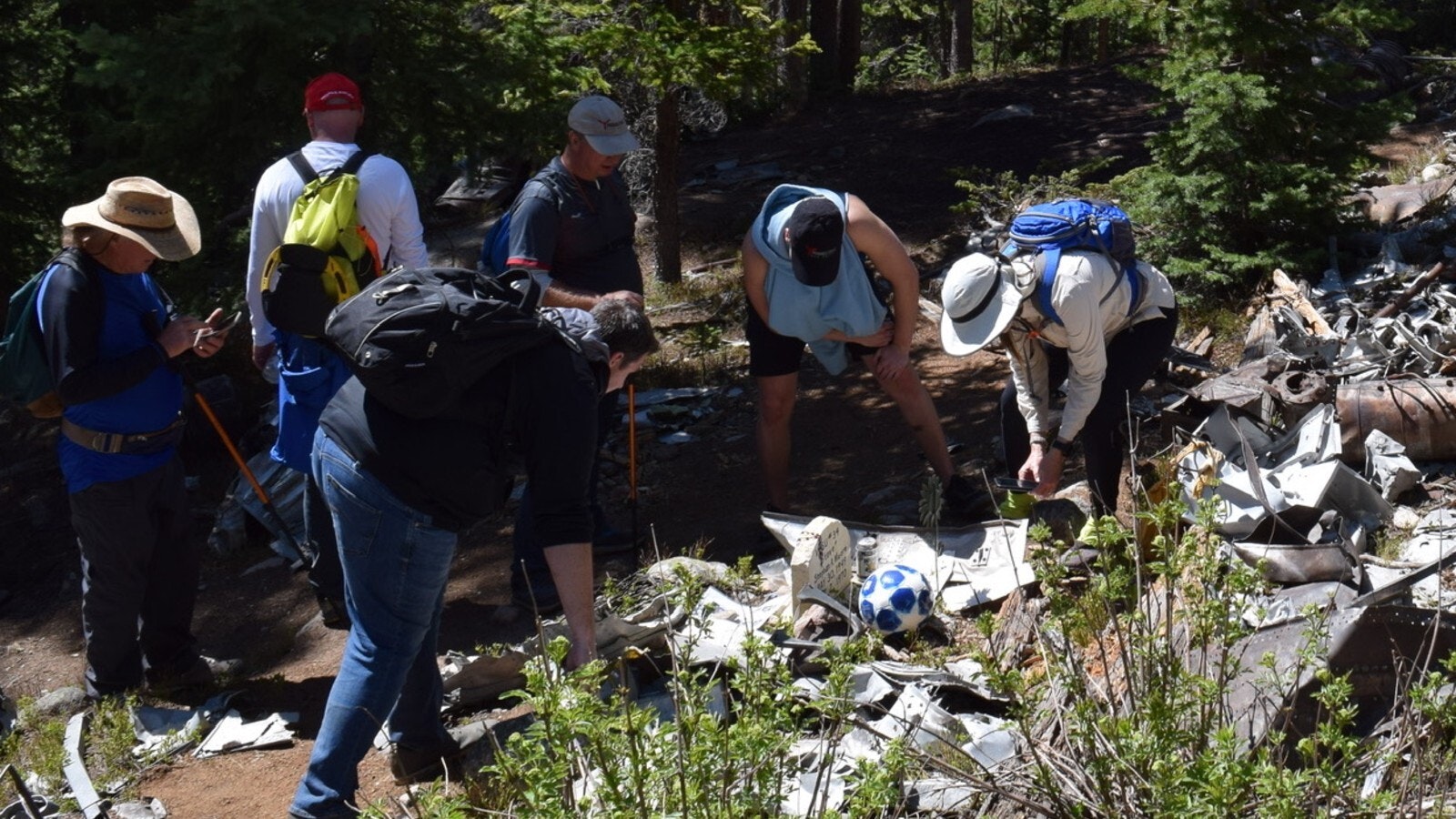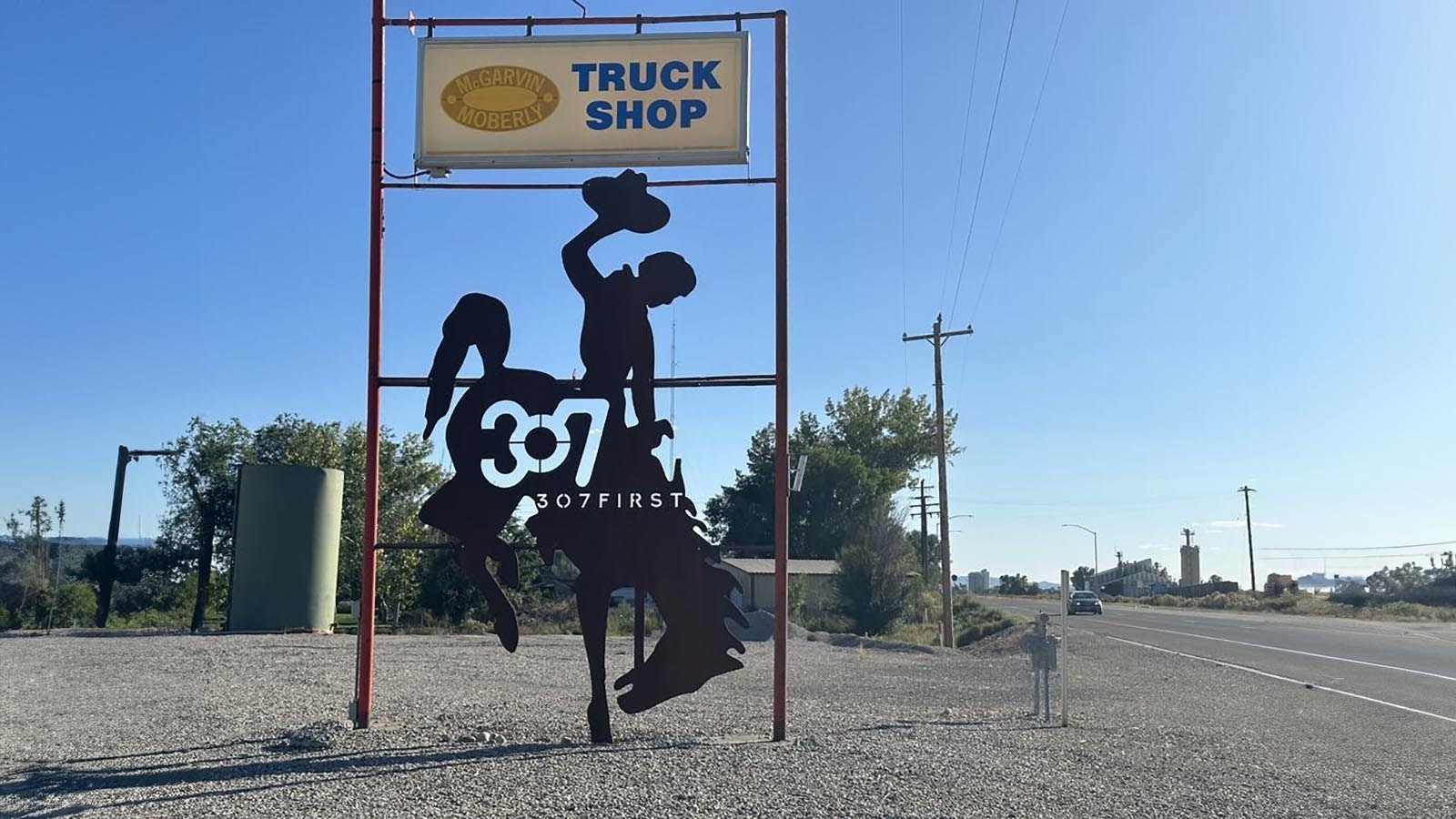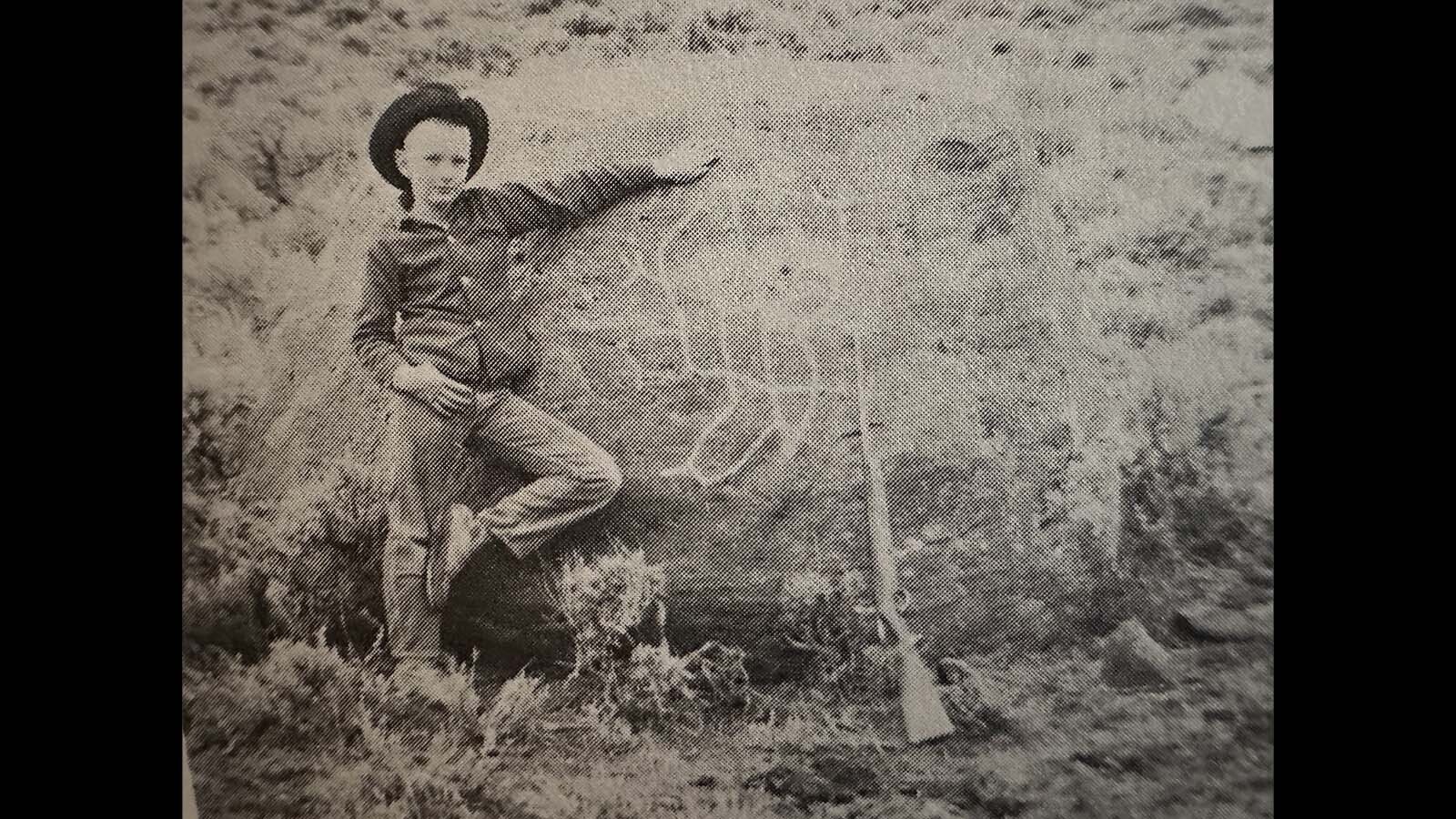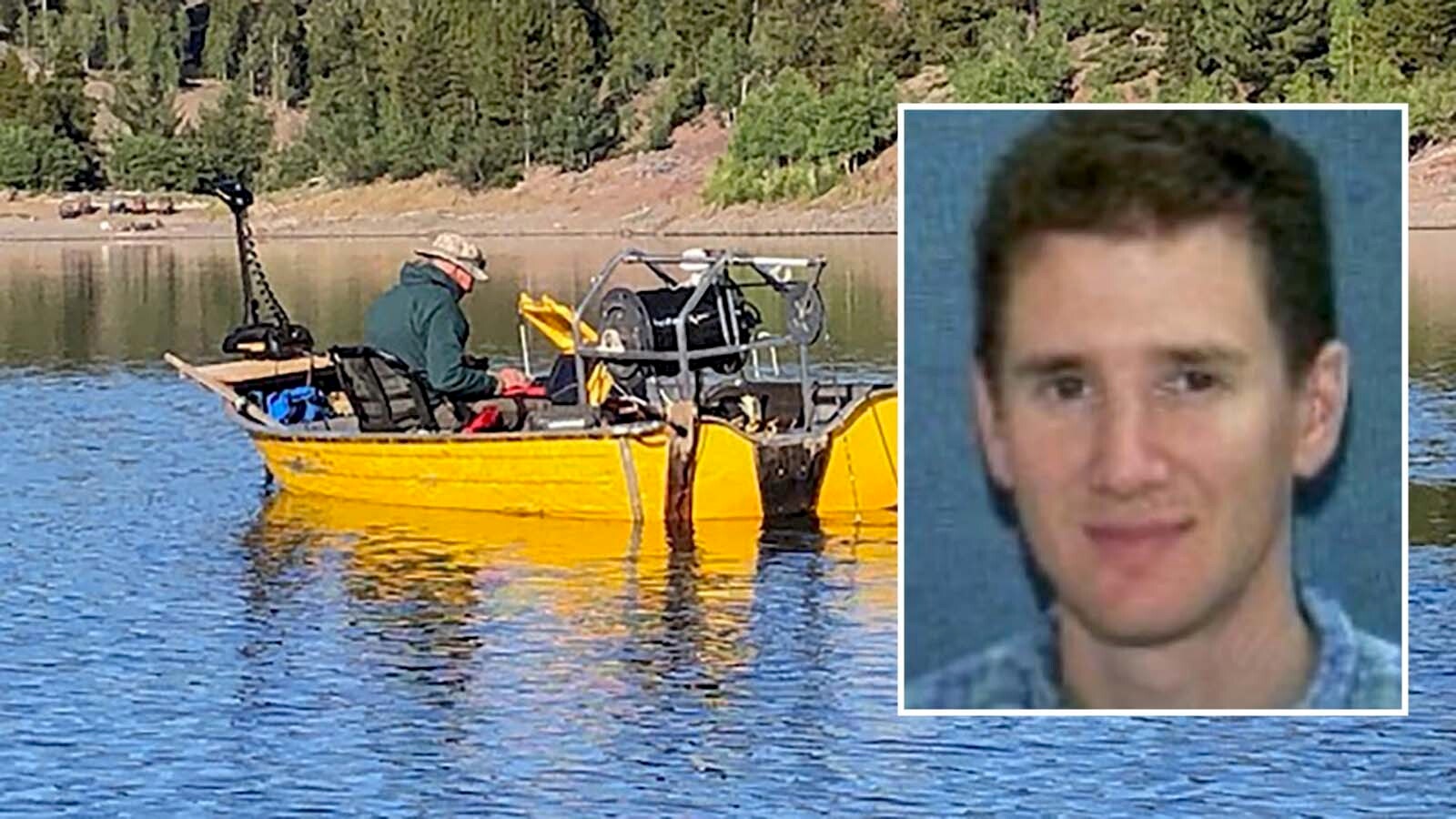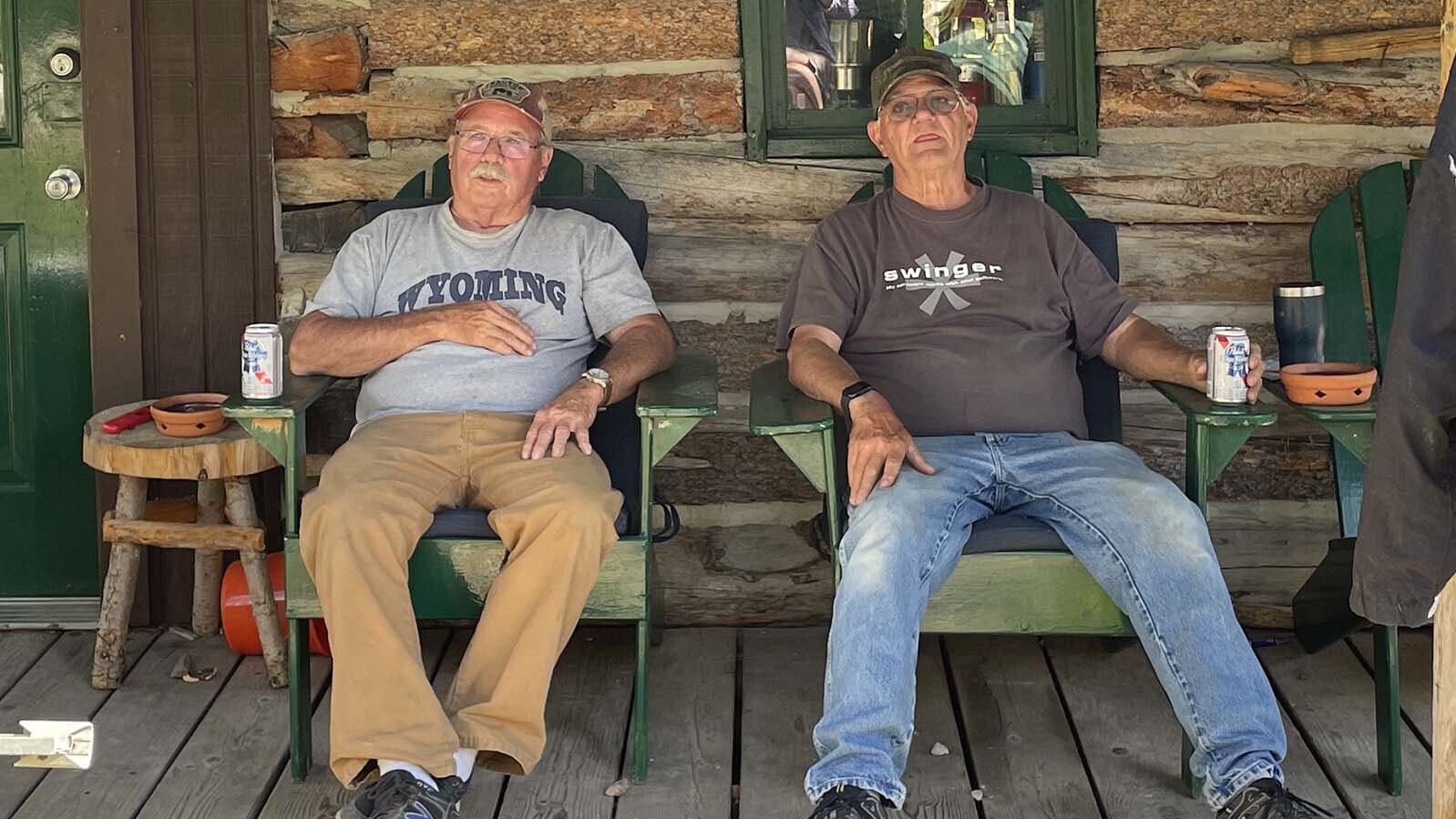The trail up to the site of the plane crash was fairly well traveled despite being a lung buster.
Over the years since the plane went down in October 1970, killing 31 Wichita State University football team players, coaches and staff, many of the family members of the deceased — and of the nine who survived — have made the trek up the mountain to pay their respects.
A dirt road off I-70, just west of Silver Plume near Loveland Ski Area, provides easy access to the trailhead.
On this day almost 51 years after the crash, the group climbing up to see the wreckage was led by Dan Gryder, a pilot and creator of the YouTube channel “Probable Cause” and about two dozen fans of his show, mostly pilots, and a couple other YouTubers here to meet Gryder and film their own shows.
It’s also Gryder’s 60th birthday, so along with a hike to see a plane crash site he’s been reading about for decades, he celebrated the occasion by offering the opportunity for some of his viewers — who he is meeting for the first time — to join him on the excursion. With him are his two sons, Drew and Dylan, both of whom are also pilots.
Admittedly, the hike up might kill him, Gryder joked as he headed up the gravel road to the trail, given that he’s an “old fat guy from Georgia.”
There are a couple things to know about Gryder and his channel.
For starters, he’s a prolific video creator who doesn’t believe in fancy editing or graphics. Instead, he grabs his cell phone and just starts filming, ignoring those who try to get out his way.
He also has a heart for this cause which compels him to fly all over the country to visit the sites of airplane crashes and then investigate their cause. In most crashes, he disagrees with whatever the National Safety and Transportation Board (NTSB) concludes.
He openly berates the NTSB on his channel as being too slow, not not thorough enough and sometimes just failing to see what he believes is the obvious cause of an airplane crash, despite the agency having a team of 500 investigators.
In fact, according to Gryder, the NTSB gets it wrong about 90% of the time, an allegation that the NTSB more or less ignores.
Gryder further objects to the lack of aviation experience among members of the NTSB’s five-member investigative board. According to bios on their website, only two members of the board, Bruce Landsberg and Michael Graham, are registered pilots.
In a statement to Cowboy State Daily, Keith Holloway with NTSB doesn’t acknowledge any specific examples of what Gryder called improper conclusions about airplane crashes on the agency’s part.
Instead, Holloway provided a blanket statement about the agency’s work.
“The probable causes from these investigations are determined by the facts and data that has been reviewed during the investigative process,” Holloway said. “Roughly 80% of the safety recommendations issued by the NTSB across all modes of transportation have been adopted and has proven to make, in this case, the aviation industry safer.”
To that, Gryder responds with an eye roll and rattles off a laundry list of cases in which he vehemently believes they got wrong.
The agency’s faulty track record, he said, is what prompted him to start his “tiny little fledging YouTube channel,” which in recent weeks has had more than 1 million hits on a single video, despite having just under 28,000 subscribers.
Along with tweaking NTSB, Gryder also baits the “haters” on his site by publicly asking them to leave or not subscribe. He doesn’t care how many subscribers he has nor does he have any intention on monetizing his site in order to give him carte blanche to speak his mind.
“I have a cell phone and a banjo,” it says on his home page. “If you don’t like it, then don’t watch. It’s very simple.”
His opinions carry a lot of weight with his fans, including the couple dozen pilots who have joined him on today’s hike to hear his particular insights as he investigates the site himself.
As one pilot who flew out for the day from North Carolina said, he wants to learn everything possible about what not to do wrong. He’s a new pilot, having recently retired from his veterinarian practice.
After retirement, he bought his own plane and learned to fly within the last two years. Other pilots, too, are eager to watch Gryder in action as he makes his assessment, which, not surprisingly, doesn’t wholly line up with the NTSB, who he said got it partly wrong yet again.
Despite the levity of Gryder’s banter, there’s a collective silence when the group finally locates the remnants of the plane, which have more or less remained intact, and the makeshift memorials left on site by loved ones.
Grave stones, Shockers jerseys, sepia-toned old photos, a favorite soda, a soccer ball painted blue and white and a host of other items have been left behind to honor the memories of the young football players, most of whom were 21 and younger, who died on the mountainside just over 50 years ago.
The sear marks burnt into the side of the mountain mark the spot where the fuselage exploded into flames. Shredded fragments of burnt and oxidized aluminum are flung like confetti in the shadows of the towering pines.
A patch of clear blue sky poked through the canopy of trees, mirroring almost exactly the weather conditions of that day.
More than anything, Gryder and the others are blown away by how much debris from the plane has survived intact nearly 50 years later. It’s rare that any wreckage remains, he said, and sometimes it might take him all day just to find a tiny scrap of the plane.
Typically, the pieces are immediately removed after the forensic investigation which, according to the NTSB, is the decision of either the owner of the plane or insurance company, which is ultimately responsible for removing it.
This, as it were, Gryder noted, presents a fairly palpable object lesson.
Of all the crashes he’s investigated, this one strikes him as more tragic, he said, given the number of lost lives and the fact that it never should have happened.
There were two planes carrying the Shocker football team from Kansas to Utah. One landed safely at Logan Airport while the other opted to take a scenic detour.
Along with being overweight, the pilots also hadn’t charted their course that day which all agree was particularly irresponsible given their lack of experience flying at high altitude, which requires its own special skill set.
Of the 40 people on board, nine survived, including one of the pilots and owner of the plane Ronald Skipper.
The official cause of the accident was pilot error, according to the NTSB, which ruled that Skipper and pilot Danny Crocker, who died in the crash, flew into a box canyon at an altitude too low to clear the mountains.
By the time they realized they were too low, Crocker attempted to turn the plane around, but the canyon was too narrow.
Poor in-flight decisions and inadequate pre-flight planning were also blamed for the tragedy, per NTSB. Contributing to the crash was the weight of the plane, the fact pilots had neglected to submit a flight plan and the fact the pilots were not familiar with the territory.
To this day, Skipper maintains that the plane crashed because the right engine caught on fire and failed and that he did everything he could to avert disaster.
In the end, Skipper’s license was revoked by the Federal Aviation Administration, but then reinstated about a year later, according to a 2014 article in the Wichita Eagle.
The fuselage was intact when the plane crashed into the side of the mountain, Gryder said, but immediately burst into flames upon impact.
After studying the canyon, Gryder surprised himself with a new realization about what might have gone wrong. On one hand, the NTSB had it right, he said.
Yes, it was definitely pilot error though ultimately, it was also a conflict of interest. He’s referring to the fact that Skipper, who signed the pilot’s paychecks, was the one giving orders that day, effectively changing seats with the pilot mid-flight.
“He (Skipper) in effect became the captain of the flight when he shouldn’t have been, and should not have been giving orders,” Gryder said. “Those guys swap seats, and the other guys started giving the orders, there’s a problem…and one that still hasn’t been fixed today.”
Gryder also concluded that the crash was actually a result of an aerodynamic stall prior to making that left bank turn.
“I think these guys became test pilots, trying to steep, crank it over steeply to get out of the predicament they’re in,” he said, noting that there was actually enough room in the box canyon to get the plane turned around. “So, it wasn’t the box canyon that got him.”
After 20 years of instructing in a DC-3, Gryder can attest it would have required a special set of skills and familiarity to make the 40-degree angle turn at an airspeed at 12,000 feet, he said.
Regardless of what happened that day, there’s no consolation to be had in further debating the cause as the group wanders through the wreckage, members picking their way through memorials erected by the generations of friends and family members whose lives were irrevocably impacted when that plane failed to clear the mountain.

